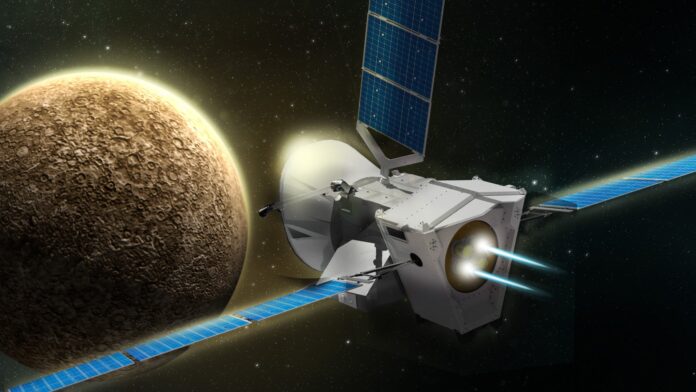Mercury, the Solar System’s innermost planet, has been photographed for the first time by Europe’s BepiColombo spacecraft.
The photograph was taken just after the probe zipped over the small world at a speed of 200 kilometres per hour (125 miles).
A total of five further flybys are planned, with each one relying on Mercury’s gravitational pull to help control the spacecraft’s speed. Bepi’s goal is to move slowly enough that it can eventually settle into a stable orbit around the planet. By the end of 2025, this should be accomplished.
A low-resolution monitoring camera on the probe’s side took the mission’s first image of Mercury. Bepi’s high-resolution science cameras are not yet ready for deployment. These are stashed away inside the spacecraft stack, as it’s known.
Bepi is a spacecraft that is essentially two spacecraft in one.
The European Space Agency (ESA) built one half, while the Japanese space agency developed the other (Jaxa). The way these two components were bundled for the trip to Mercury obstructs the main cameras’ apertures.
This means the mission’s first photographs of Mercury were captured by a couple of “selfie” cameras installed on the outside of the craft, which were nonetheless good enough to pick out recognisable features on the planet’s surface.
Even at this early stage, data was being collected during the first flyby. It was an opportunity for the scientists behind the Mercury Imaging X-ray Spectrometer, or MIXS, in the United Kingdom to gain a better understanding of their instrument’s performance.
The detectors at MIXS pick up a background noise of energetic particles known as cosmic rays. When the expedition reaches Mercury’s orbit, the European and Japanese components will split off and play different roles.
The Mercury Planetary Orbiter (MPO) is a spacecraft developed by Europe that will map Mercury’s landscape, generate height profiles, collect data on the planet’s surface structure and composition, and sense its interior.

















